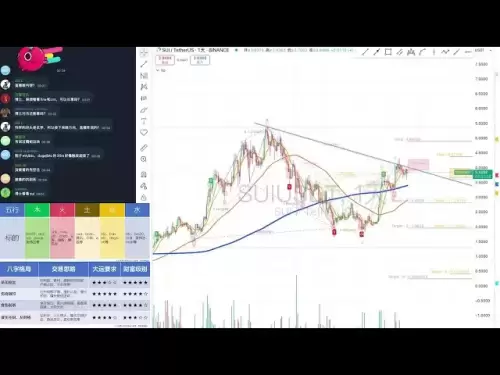-
 Bitcoin
Bitcoin $105,297.0405
0.52% -
 Ethereum
Ethereum $2,451.2531
-1.48% -
 Tether USDt
Tether USDt $1.0000
-0.01% -
 XRP
XRP $2.3178
-2.03% -
 BNB
BNB $643.3375
-0.47% -
 Solana
Solana $164.8325
0.09% -
 USDC
USDC $0.9997
0.00% -
 Dogecoin
Dogecoin $0.2182
-1.98% -
 TRON
TRON $0.2732
3.16% -
 Cardano
Cardano $0.7263
-1.26% -
 Sui
Sui $3.8232
1.93% -
 Chainlink
Chainlink $15.2734
-2.01% -
 Avalanche
Avalanche $21.8006
-1.61% -
 Stellar
Stellar $0.2807
-1.28% -
 Hyperliquid
Hyperliquid $25.5199
-1.51% -
 Shiba Inu
Shiba Inu $0.0...01415
-1.81% -
 UNUS SED LEO
UNUS SED LEO $8.7523
0.79% -
 Hedera
Hedera $0.1905
-0.04% -
 Bitcoin Cash
Bitcoin Cash $385.5028
-0.76% -
 Toncoin
Toncoin $3.0341
1.30% -
 Polkadot
Polkadot $4.5384
-0.52% -
 Litecoin
Litecoin $93.1952
-5.33% -
 Monero
Monero $345.5257
1.01% -
 Bitget Token
Bitget Token $5.1385
-0.23% -
 Pepe
Pepe $0.0...01275
-2.68% -
 Dai
Dai $0.9998
-0.01% -
 Pi
Pi $0.7291
1.31% -
 Ethena USDe
Ethena USDe $1.0006
0.03% -
 Aave
Aave $254.9375
8.06% -
 Bittensor
Bittensor $407.4894
0.89%
What should I do if KAVA plummets? What are the stop-loss strategies?
If KAVA's price drops significantly, use stop-loss strategies like fixed percentage or trailing stops, reassess your investment thesis, and consider dollar-cost averaging for long-term potential.
May 20, 2025 at 10:56 pm
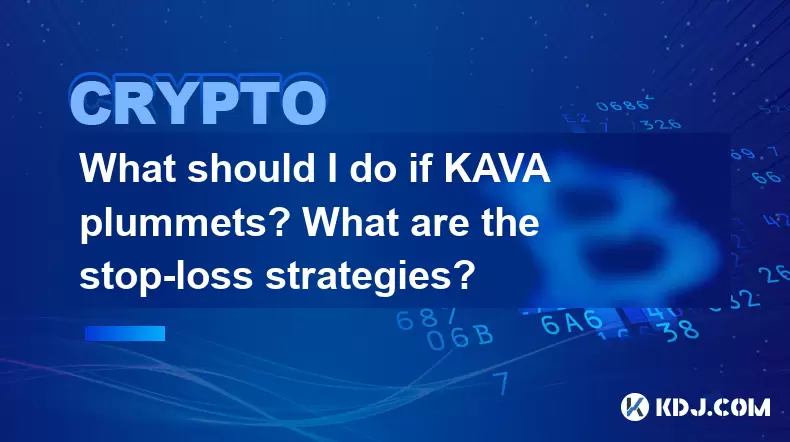
If KAVA, a cryptocurrency known for its role in the Cosmos ecosystem and its DeFi applications, experiences a significant price drop, it's crucial to have a well-thought-out strategy to manage your investments effectively. This article will explore various stop-loss strategies and what steps you can take if KAVA plummets.
Understanding Stop-Loss Orders
A stop-loss order is an order placed with a broker to sell a security when it reaches a certain price. It's designed to limit an investor's loss on a security position. For KAVA, setting a stop-loss order can help you manage risk by automatically selling your holdings if the price falls to a predetermined level.
- To set a stop-loss order on a cryptocurrency exchange, you typically follow these steps:
- Log into your exchange account.
- Navigate to the trading section for KAVA.
- Select the "Stop-Limit" or "Stop-Loss" order type.
- Set the stop price at which you want the order to trigger.
- Set the limit price at which you want the order to execute.
- Confirm the order.
Types of Stop-Loss Strategies
There are several types of stop-loss strategies you can employ for KAVA, each with its own advantages and considerations.
Fixed Percentage Stop-Loss
A fixed percentage stop-loss involves setting a stop-loss order at a certain percentage below the purchase price. For example, if you buy KAVA at $5 and set a 10% stop-loss, the order will trigger if the price drops to $4.50.
- Advantage: It's simple and straightforward.
- Disadvantage: It doesn't account for market volatility or the asset's historical price movements.
Trailing Stop-Loss
A trailing stop-loss moves with the market price. It's set at a percentage or dollar amount below the market price and adjusts as the price moves in your favor. If KAVA's price rises to $6, a 10% trailing stop would move to $5.40.
- Advantage: It allows you to lock in profits while still protecting against significant downturns.
- Disadvantage: It can be triggered by short-term volatility, potentially causing you to sell prematurely.
Time-Based Stop-Loss
A time-based stop-loss involves setting a stop-loss order that activates after a certain period. For instance, you might set a stop-loss to activate after 30 days, regardless of the price movement.
- Advantage: It can be useful if you believe the market will stabilize over time.
- Disadvantage: It might not react quickly enough to sudden price drops.
What to Do if KAVA Plummets
If KAVA experiences a significant price drop, here are some steps you can take to manage your investment.
Reassess Your Investment Thesis
When KAVA plummets, reassess your investment thesis. Ask yourself why you initially invested in KAVA and whether those reasons still hold true. Consider the following:
- Has there been a fundamental change in the project's development or market conditions?
- Are there any new competitors or regulatory changes that could affect KAVA's future?
Review Your Portfolio Allocation
Review your portfolio allocation to ensure that your exposure to KAVA is still within your risk tolerance. If KAVA's price drop has skewed your portfolio, consider rebalancing.
- Calculate the current percentage of your portfolio that KAVA represents.
- Compare this to your target allocation and adjust if necessary.
Consider Dollar-Cost Averaging
Dollar-cost averaging (DCA) can be a strategy to consider if you believe in KAVA's long-term potential despite the price drop. DCA involves investing a fixed amount of money at regular intervals, regardless of the price.
- Determine a fixed amount you're willing to invest periodically.
- Set up automatic purchases of KAVA at these intervals.
Evaluate Market Sentiment
Evaluate market sentiment around KAVA. Look at social media, forums, and news to gauge whether the price drop is a temporary dip or a sign of deeper issues.
- Check platforms like Twitter, Reddit, and specialized crypto forums for discussions about KAVA.
- Read news articles and reports to understand any recent developments or announcements.
Long-Term vs. Short-Term Strategies
Your approach to a KAVA price drop can vary depending on whether you're a long-term or short-term investor.
Long-Term Strategy
If you're a long-term investor, a price drop might be an opportunity to buy more KAVA at a lower price, provided you still believe in its fundamentals. Consider the following:
- Continue with your DCA strategy if you're confident in KAVA's future.
- Hold onto your existing KAVA holdings if your investment thesis remains unchanged.
Short-Term Strategy
As a short-term investor, you might be more focused on quick gains and losses. In this case, a price drop could signal a need to exit your position.
- Use a stop-loss order to limit your losses.
- Consider selling part or all of your KAVA holdings if the price drop is significant and you no longer see short-term upside potential.
Emotional Discipline
Maintaining emotional discipline is crucial when dealing with a plummeting cryptocurrency like KAVA. Emotional reactions can lead to poor decision-making, so it's important to stick to your pre-determined strategies.
- Avoid making impulsive decisions based on fear or greed.
- Stick to your stop-loss orders and investment plan, even if it's tempting to deviate.
Frequently Asked Questions
Q: Can I set multiple stop-loss orders for KAVA at different price levels?
A: Yes, some exchanges allow you to set multiple stop-loss orders at different price levels. This can be useful if you want to implement a tiered exit strategy, where you sell portions of your holdings at various price points.
Q: How do I know if my stop-loss order has been triggered and executed?
A: Most exchanges will notify you via email or through their platform when a stop-loss order is triggered and executed. You can also check the status of your orders in the trading section of your exchange account.
Q: Should I adjust my stop-loss order if KAVA's price starts to recover?
A: It depends on your investment strategy. If you're using a trailing stop-loss, it will automatically adjust as the price recovers. For a fixed percentage stop-loss, you might consider moving it higher to lock in some gains, but this should be based on your overall risk management plan.
Q: What should I do if my stop-loss order is not executed due to a price gap?
A: If a stop-loss order is not executed due to a price gap (where the price jumps from one level to another without trading in between), you might be filled at a worse price than expected. In such cases, reassess your position and consider setting a new stop-loss order at a level that reflects the current market conditions.
Disclaimer:info@kdj.com
The information provided is not trading advice. kdj.com does not assume any responsibility for any investments made based on the information provided in this article. Cryptocurrencies are highly volatile and it is highly recommended that you invest with caution after thorough research!
If you believe that the content used on this website infringes your copyright, please contact us immediately (info@kdj.com) and we will delete it promptly.
- Ethereum (ETH) Exchange Reserves Have Dropped a Lot Over the Previous Month
- 2025-05-21 03:35:13
- Remittix (RTX) Presale Frenzy Promises 12x Gains by Year-End
- 2025-05-21 03:35:13
- Bitcoin Came Within Striking Distance of Its All-time High on Tuesday
- 2025-05-21 03:30:14
- Ethereum (ETH) Price Halts Below $2,500 as Market Awaits Further Signals
- 2025-05-21 03:30:14
- BTFD Coin (BTFD) – The Bulls Are Charging Toward Launch
- 2025-05-21 03:25:13
- Coinbase CEO Brian Armstrong seems open to involvement with Republican figures, including members of US President Donald Trump's inner circle.
- 2025-05-21 03:25:13
Related knowledge
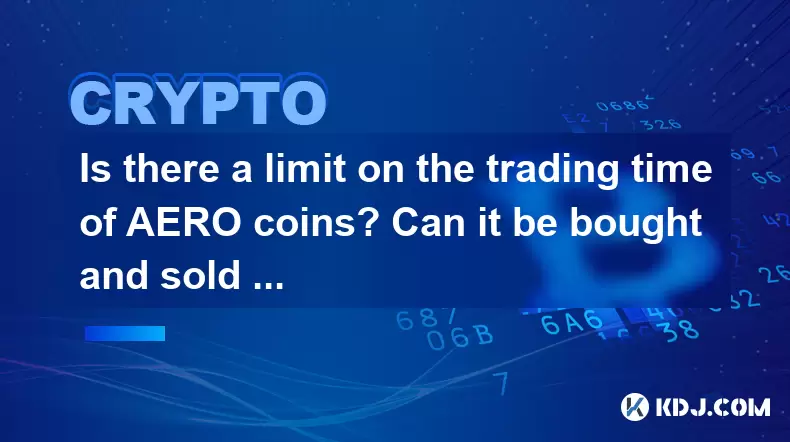
Is there a limit on the trading time of AERO coins? Can it be bought and sold 24 hours a day?
May 21,2025 at 01:21am
The AERO coin, like many other cryptocurrencies, operates on a decentralized network, which means it is not bound by traditional market hours. This raises the question of whether there is a limit on the trading time of AERO coins and if they can be bought and sold 24 hours a day. In this article, we will explore the trading availability of AERO coins, t...
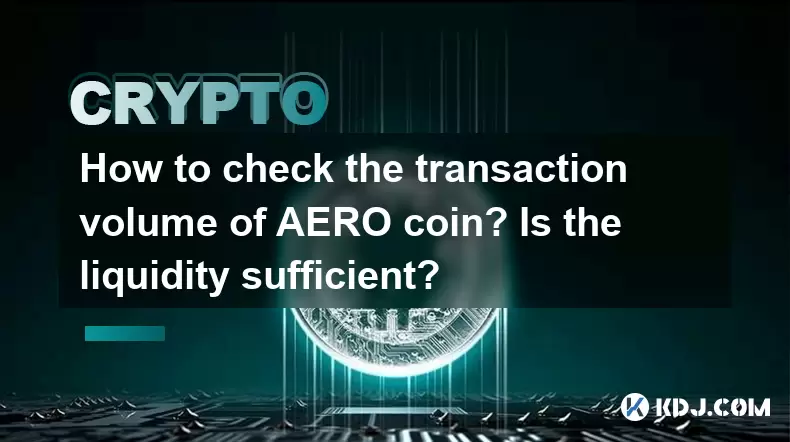
How to check the transaction volume of AERO coin? Is the liquidity sufficient?
May 20,2025 at 08:49pm
To understand the transaction volume and liquidity of AERO coin, it's important to delve into various aspects such as where to find the data, how to interpret it, and what it means for the coin's overall health. In this article, we'll explore these topics in detail, ensuring you have a comprehensive guide to assessing AERO coin's market activity. Where ...
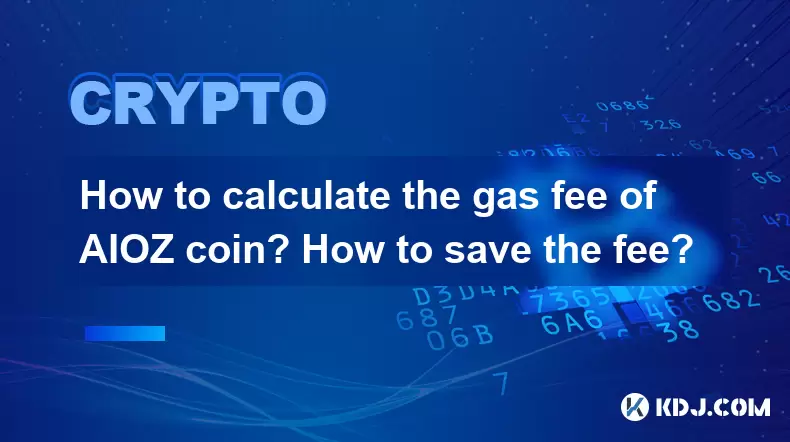
How to calculate the gas fee of AIOZ coin? How to save the fee?
May 20,2025 at 11:01pm
How to Calculate the Gas Fee of AIOZ Coin? How to Save the Fee? Calculating and managing gas fees for AIOZ coin transactions is crucial for users looking to optimize their cryptocurrency experience. Gas fees are essentially the transaction costs associated with executing operations on the AIOZ network. Understanding how to calculate these fees and strat...
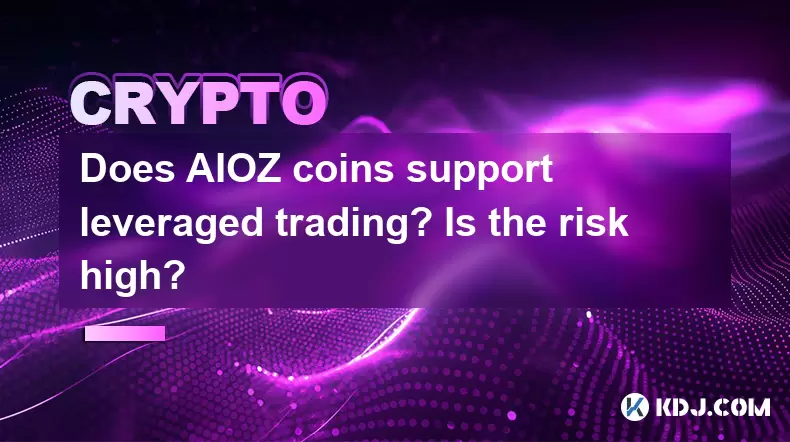
Does AIOZ coins support leveraged trading? Is the risk high?
May 20,2025 at 09:00pm
Introduction to AIOZ CoinAIOZ Network is a decentralized blockchain platform that focuses on providing scalable and secure infrastructure for decentralized applications (dApps) and data storage solutions. The native cryptocurrency of the AIOZ Network is the AIOZ coin, which plays a crucial role in the ecosystem, facilitating transactions and incentivizi...
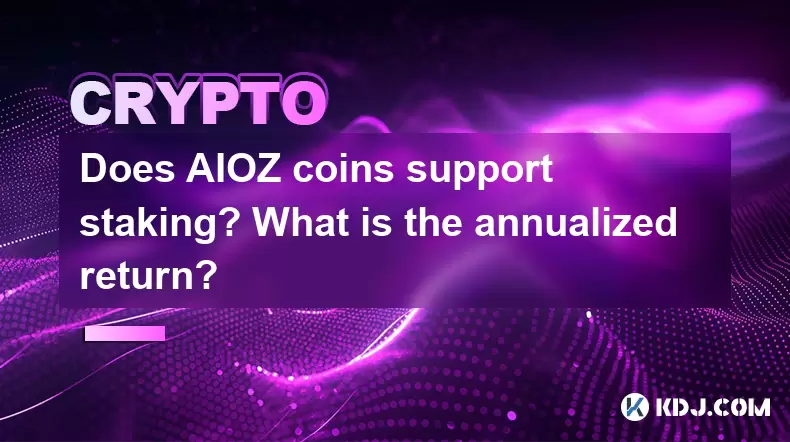
Does AIOZ coins support staking? What is the annualized return?
May 21,2025 at 12:56am
Introduction to AIOZ CoinAIOZ Network is a blockchain platform that aims to revolutionize the way decentralized applications (dApps) and decentralized finance (DeFi) operate. One of the key features of the AIOZ Network is its native cryptocurrency, AIOZ coin. This article will explore whether AIOZ coins support staking and what the annualized return mig...
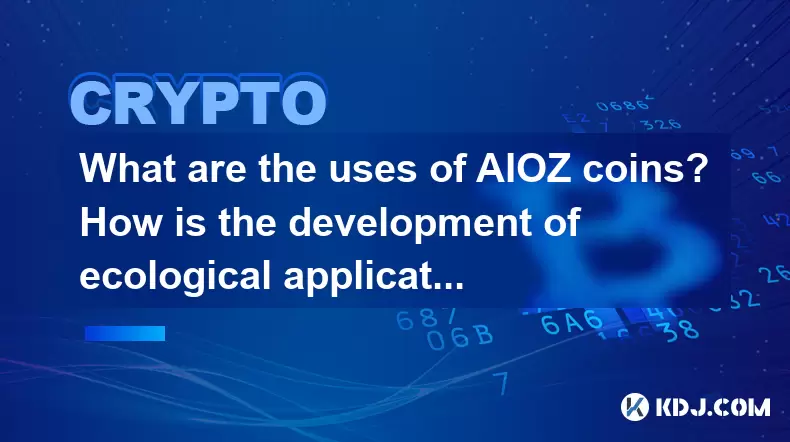
What are the uses of AIOZ coins? How is the development of ecological applications?
May 21,2025 at 03:14am
AIOZ Network, built on a decentralized blockchain infrastructure, leverages its native cryptocurrency, AIOZ, to facilitate a variety of functions within its ecosystem. The AIOZ coin serves as the backbone for numerous applications and services that the network offers, ranging from content delivery and storage to decentralized finance (DeFi) solutions. U...

Is there a limit on the trading time of AERO coins? Can it be bought and sold 24 hours a day?
May 21,2025 at 01:21am
The AERO coin, like many other cryptocurrencies, operates on a decentralized network, which means it is not bound by traditional market hours. This raises the question of whether there is a limit on the trading time of AERO coins and if they can be bought and sold 24 hours a day. In this article, we will explore the trading availability of AERO coins, t...

How to check the transaction volume of AERO coin? Is the liquidity sufficient?
May 20,2025 at 08:49pm
To understand the transaction volume and liquidity of AERO coin, it's important to delve into various aspects such as where to find the data, how to interpret it, and what it means for the coin's overall health. In this article, we'll explore these topics in detail, ensuring you have a comprehensive guide to assessing AERO coin's market activity. Where ...

How to calculate the gas fee of AIOZ coin? How to save the fee?
May 20,2025 at 11:01pm
How to Calculate the Gas Fee of AIOZ Coin? How to Save the Fee? Calculating and managing gas fees for AIOZ coin transactions is crucial for users looking to optimize their cryptocurrency experience. Gas fees are essentially the transaction costs associated with executing operations on the AIOZ network. Understanding how to calculate these fees and strat...

Does AIOZ coins support leveraged trading? Is the risk high?
May 20,2025 at 09:00pm
Introduction to AIOZ CoinAIOZ Network is a decentralized blockchain platform that focuses on providing scalable and secure infrastructure for decentralized applications (dApps) and data storage solutions. The native cryptocurrency of the AIOZ Network is the AIOZ coin, which plays a crucial role in the ecosystem, facilitating transactions and incentivizi...

Does AIOZ coins support staking? What is the annualized return?
May 21,2025 at 12:56am
Introduction to AIOZ CoinAIOZ Network is a blockchain platform that aims to revolutionize the way decentralized applications (dApps) and decentralized finance (DeFi) operate. One of the key features of the AIOZ Network is its native cryptocurrency, AIOZ coin. This article will explore whether AIOZ coins support staking and what the annualized return mig...

What are the uses of AIOZ coins? How is the development of ecological applications?
May 21,2025 at 03:14am
AIOZ Network, built on a decentralized blockchain infrastructure, leverages its native cryptocurrency, AIOZ, to facilitate a variety of functions within its ecosystem. The AIOZ coin serves as the backbone for numerous applications and services that the network offers, ranging from content delivery and storage to decentralized finance (DeFi) solutions. U...
See all articles























